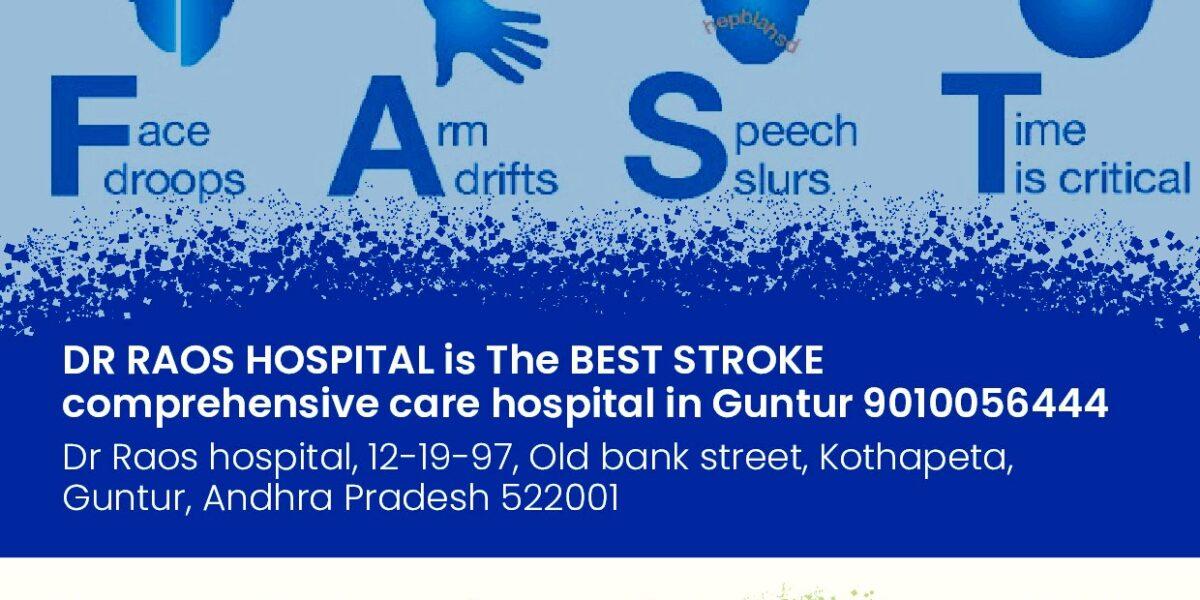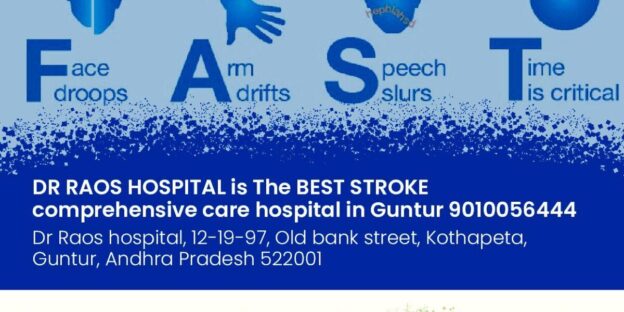Cerebrovascular accident – the best treatment is at Dr Raos, Guntur
Introduction
A cerebrovascular accident (CVA) is a medical emergency that happens when the blood supply to your brain is suddenly interrupted. This can happen due to a blockage, such as a clot, or a bleed. A CVA is also commonly known as a stroke. Symptoms of a CVA can include: -sudden onset of weakness or numbness on one side of your body -sudden confusion or trouble speaking -sudden trouble seeing in one or both eyes -sudden dizziness, loss of balance or coordination If you experience any of these symptoms, it is important to call 9010056444 or 9010057444 immediately and get to Dr Rao’s hospital for the best neurology and neurosurgery services by Dr Rao, who is the best interventional neurosurgeon and fellowship trained from the USA.
causes
There are many different causes of cerebrovascular accidents (CVAs), also known as strokes. The most common cause is a blockage in one of the arteries that supplies blood to the brain. This can be due to a buildup of plaque, a blood clot, or other debris. Other causes include bleeding in the brain (hemorrhagic stroke) and narrowing of the arteries (arteriosclerosis). CVAs can also be caused by problems with the heart, such as an irregular heartbeat (atrial fibrillation). This can cause blood clots to form, which can then travel to the brain and block an artery. Other heart-related conditions that can increase the risk of a CVA include heart attack, heart failure, and cardiomyopathy. Certain lifestyle factors can also increase the risk of having a CVA. These include smoking, high blood pressure, diabetes, and high cholesterol. Obesity and physical inactivity are also risk factors. Drinking too much alcohol can also increase the risk of having a CVA.
symptoms
Symptoms of a stroke can be divided into two main categories: physical and mental. Physical symptoms are those that affect the body and may include paralysis, numbness, weakness, and difficulty speaking or understanding speech. Mental symptoms are those that affect the mind and may include confusion, memory loss, and changes in mood or personality. The most common symptom of a stroke is sudden paralysis or weakness in the face, arm, or leg. This paralysis or weakness may be accompanied by numbness, tingling, or pain. Other physical symptoms may include difficulty speaking or understanding speech, difficulty swallowing, double vision, and balance problems. Mental symptoms of a stroke may include confusion, memory loss, and changes in mood or personality. The person may become agitated or depressed. They may also have trouble understanding or responding to questions.
Diagnosis
A diagnosis of cerebrovascular accident (CVA) can be made based on the individual’s symptoms and medical history, as well as a physical examination. Imaging tests, such as computed tomography (CT) or magnetic resonance imaging (MRI), may also be used to rule out other potential causes of the individual’s symptoms.
treatment
There is no one definitive answer for the treatment of a cerebrovascular accident. Every case is unique and must be treated as such. However, there are some general principles that can be followed in order to provide the best possible care for a patient. The first step is to stabilize the patient. This means ensuring that they are breathing and have a pulse. Once this is done, the next step is to prevent further damage to the brain. This can be done by lowering the patient’s blood pressure and keeping their blood sugar levels under control. Once the patient is stabilized, the next step is to start rehabilitation. This will help the patient regain as much function as possible. Physical, occupational, and speech therapy are all important components of rehabilitation. The final step is to provide support for the patient and their family. This includes helping them adjust to their new lifestyle and providing emotional support.
Living with it
“Living with it” It can be difficult to adjust to life after a cerebrovascular accident, especially if you have experienced a significant loss of function. There are a number of things that you can do to make the adjustment easier, however. First, it is important to stay positive and focus on your recovery. It may be helpful to set small goals for yourself and celebrate each accomplishment. Second, it is important to stay active and engaged in your life. This means participating in activities that you enjoy and spending time with people who make you feel good. Finally, it is important to seek out support from family, friends, and professionals. There are many resources available to help you cope with your new reality.
Conclusion
The cerebrovascular accident, or CVA, is a serious condition that can have a profound impact on a person’s life. While there are treatments available that can help to improve the symptoms of a CVA, it is important to remember that this is a condition that will require lifelong management. There is no cure for a CVA but timely treatment will reduce the disability, with proper care and treatment, people can live long and healthy lives.


